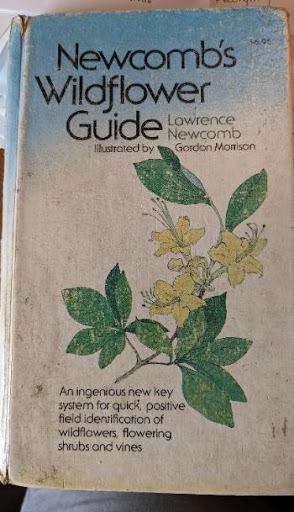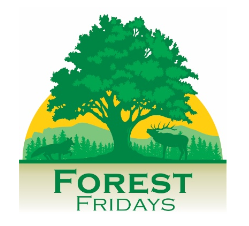Forest Fridays: Improving your plant ID skills
By Chris Firestone
September is national self-improvement month, and I have a long list that I would like to work on… more exercise for one. But if you are looking for something fun, may I suggest honing your skills in plant identification?
Each species tells a story and knowing the name is only the beginning. Once you know the common and scientific names, the story can include where the plant comes from, its native or non-native status, its relationship and value to pollinators, and dispersal mechanisms, for example.
You may also learn how the plant has been used by native and foreign cultures, how and why it was so named, its role in the ecosystem, and whether or not it is poisonous or irritating to the skin. Of particular interest to botanists herbalists, and foragers, one can also learn if it is endangered or threatened, produces beneficial compounds, and (perhaps my favorite) if it is edible.
Before you start, you will need to note characteristics of the flowers, leaves, or bark of the plant. The flowers can be irregular or radially symmetric (like spokes on a wheel) and the leaves can be arranged opposite or alternate. Next, determine if they are simple or compound, entire, toothed, or divided. With these details, choose your identification resource and begin your process.

If you still like using books, a good book for beginners is Newcomb’s Wildflower Guide (first printed in 1977 but updated periodically). This guide also explains how to use a dichotomous key for plant identification. Line drawings of the plants are good for detail of the flowers, leaves, and stems. However, other books such as National Audubon Society Wildflowers may use color photographs of the flowers. Using a diversity of sources is definitely beneficial.
Internet sources are abundant, including phone apps, photographs, social media, and downloadable PDFs, such as Newcomb’s Wildflower Guide.
Seek, developed by iNaturalist, is an example of a popular phone app for plant identification. Using your phone camera and drawing on millions of photos in iNaturalist, Seek will identify the species you have photographed and is great for kids and families to learn the plants around them.
Facebook groups like Plant Identification and Pennsylvania Native Plant Society Discussion Group will identify plants with a photograph and location post. These are also good sites to see posts about native plants.
For non-beginners, a PDF of Flora of Southeastern US: Pennsylvania is a dichotomous key and includes information about species distribution and native/non-native status. This is the source that the Wild Plant Management Program staff (DCNR Bureau of Forestry) uses for plant names.
Pennsylvania is home to over 3000 species of plants, including trees, shrubs, flowers, vines, and ferns. Don’t sweat it; you have the rest of the month to learn them. I can’t wait to hear all about it, but first I need to go to the gym.

Sources
Newcomb’s Wildflower Guide by Lawrence Newcomb published in 1977, pdf accessed at Read Download Newcombs Wildflower Guide PDF – PDF Download (bibleandbookcenter.com)
National Audubon Society Field Guide to Wildflower: Eastern Division, Knopf, 2nd ed, 2001.
Seek by iNaturalist. Available from https://www.inaturalist.org. Accessed [8 September 2022].
Flora Request – North Carolina Botanical Garden (unc.edu) Access to the (Flora of the Southeastern US) FSUS 2022: Pennsylvania
About the Author: Chris Firestone
Chris Firestone is a botanist with 28 years in the Bureau of Forestry, working to conserve native wild plants in Pennsylvania through policy, education, and management of habitat and invasive species. She lives in Potter County and enjoys gardening, foraging, hiking and camping.



